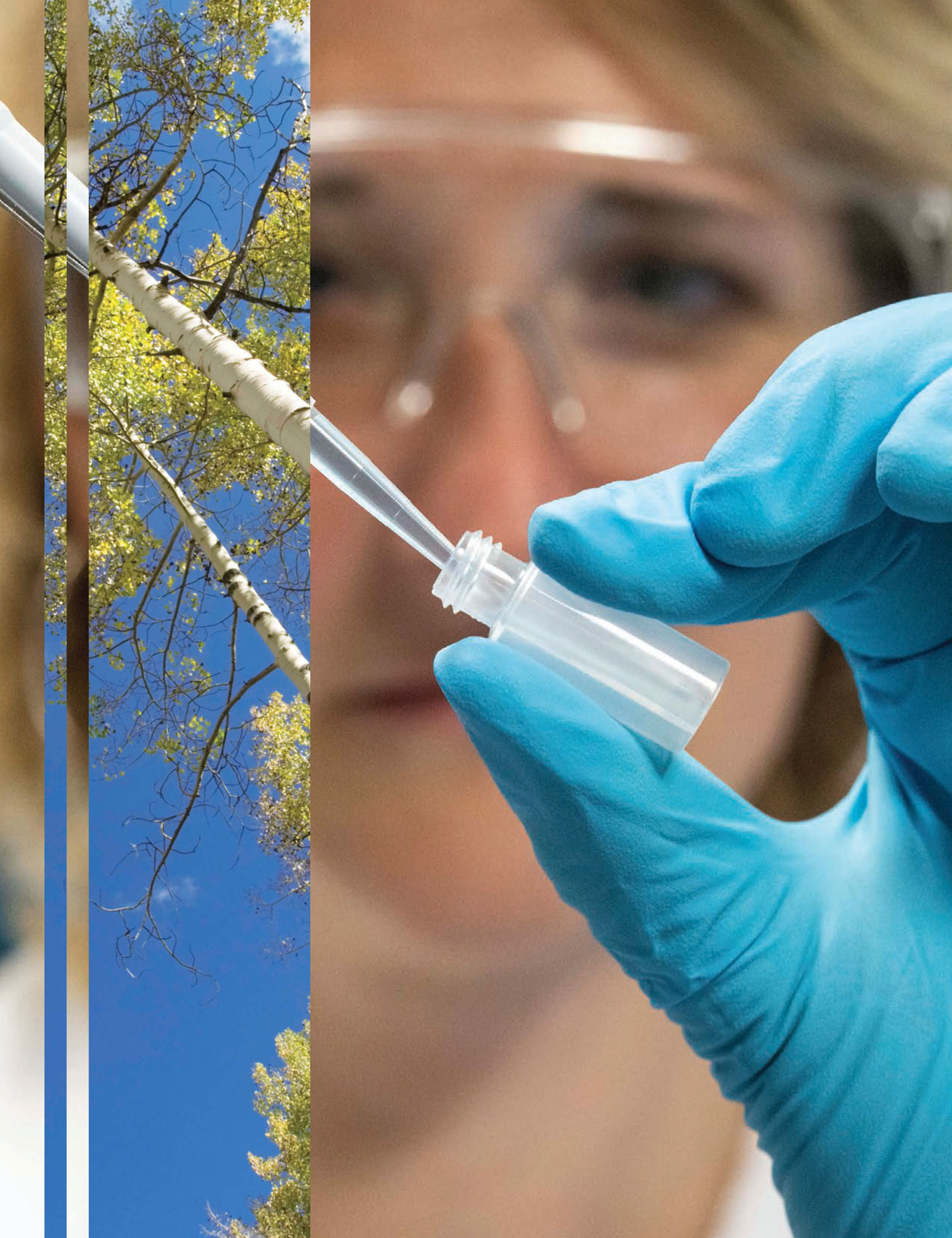Our science

Precision medicine is the focus of Stallergenes Greer’s strategy. We are committed to promoting progress and developing precise and personalised therapeutic solutions which are tailored to the individual profile and needs of each patient.
A high level of scientific expertise
Allergen immunotherapy (AIT) is the only therapeutic class capable of modifying disease progression and potentially preventing the onset of the disease. AIT consists in administering allergens by sublingual or subcutaneous route, thus allowing the reorientation of the immune responses of patients towards allergenspecific tolerance induction.
We focus our efforts on allergen characterisation as well as on optimal approaches to deliver allergens to the immune system. Each allergen source contains several molecules which are recognised by the immune system as allergens and will trigger an allergic reaction.
Allergens are large, complex molecules. Working with large molecules requires a high level of scientific expertise and state-of-the-art technologies to characterise and quantify allergens. Specific processes are required due to both the complexity of the molecules and their biological nature.
Focusing on precision medicine to advance personalised solutions
Stallergenes Greer boasts a long-standing expertise regarding the mechanism of action of AIT and has been intensifying the identification of biomarker candidates to predict and monitor the efficacy of the company’s AIT treatments.
Our research has allowed us to identify pro- allergenic cells, such as Th2A –T helper cells that are involved in the production of IgE (immunoglobulin E, antibodies produced by the immune system when it reacts to certain substances) as a therapeutic target for AIT. We continue to work towards identifying the most relevant allergens for the treatment of allergies and partner with renowned academics in the field of respiratory allergies to characterise the molecular profiles of allergic patients.
Clinical development and real-world studies
Stallergenes Greer has conducted a large number of clinical studies, involving more than 9,000 patients, to provide evidence that our AIT treatments are both safe and effective and to produce high-quality data for decision-making.
A real-world approach is also increasingly being used by Stallergenes Greer to further evidence AIT treatments beyond clinical trials. Since they are based on large populations of patients, real-world studies provide useful data to optimise AIT prescription and clinical performance. Real-world studies include larger patient populations which better reflect “real life” patient profiles. The Group’s BREATH programme, launched in 2017, showed both positive results regarding the efficacy of sublingual tablets in respiratory disease and real-world evidence that patients with allergic rhinitis achieve control of their respiratory disease with fewer allergic rhinitis prescriptions and less need for symptomatic medication1,2.
Stallergenes Greer has four real-world studies underway:
- CORAP: to evaluate the impact of AIT on the quality of life of patients and other relevant patient reported outcomes.
- EfficAPSI: to document the public health value of named patient products over the long term and for a wide range of allergens. More than 200,000 patients will be included in this retrospective observational study which analyses the effect of allergen immunotherapy on the occurrence or worsening of asthma, and the use of associated medication.
- MaDo: to retrospectively analyse the needs, reasons, modalities and impacts of AIT dose adjustment.
- PRACTIS: which aims to evaluate the benefits of sublingual AIT in current practice according to the different methods of use and the type of allergen.
A collaborative approach to innovation
Stallergenes Greer leverages open innovation to continue to advance precision medicine for the benefit of patients and healthcare practitioners.
The Group recently entered into a research collaboration on the discovery of biomarkers of AIT efficacy with Imperial College London. The collaboration will contribute to both deciphering the mode of action of AIT and identifying key markers that can be used in the routine practice of allergology. Based on the understanding of specific phenotypes and the responses of patients with allergies, allergists will be able to tailor treatment modalities with the right dosing at the right time for each individual.
In 2021, Stallergenes Greer also signed a partnership with Alyatec, a contract research organisation based in Strasbourg University Hospital (France). The collaboration, which focuses on allergy pathophysiology and endotypes, AIT mode of action and clinical validation, will build on Alyatec’s competencies in research and clinical services as well as its state-of-the-art technology, including a new generation environmental exposure chamber.
1. P. Devillier et al. Allergy 2018; doi: 10.1111/all.13705 — 2. S. Zielen et al. Allergy 2019; 73:165-77

Alyatec's environmental exposure chamber
Professor Frédéric de Blay
Principal investigator and Medical expert of Alyatec - Head of the Thoracic Pathology Unit of Strasbourg University Hospital (France) - Head of the Pneumology, Allergology and Environmental Respiratory Pathology Unit - President of the French Federation of Allergology
Read more...
“Alyatec's environmental exposure chamber allows to both accelerate drug development and improve patient characterisation.
The chamber is used to expose patients to an allergen to which they are sensitised: when an allergic reaction is triggered, the patient is given a drug or a placebo and the efficacy of the drug can be measured rapidly. If the drug shows limited efficacy in the chamber, we know that is won't work in real life either This allows us to eliminate candidate molecules fairly rapidly.
The chamber also contributes to improving patient characterisation to, for example, discover which patient will best respond to desensitisation. When a patient with asthma has an asthma attack in the 30 to 60 minutes following exposure or develops another respiratory symptom in the 3 to 12 hours following the immediate response, we know that these patients produce more eosinophils and may be good candidates for desensitisation.
We have made significant progress in recent years and exposure chambers have a part to play in advancing allergen immunotherapy.”

